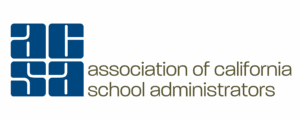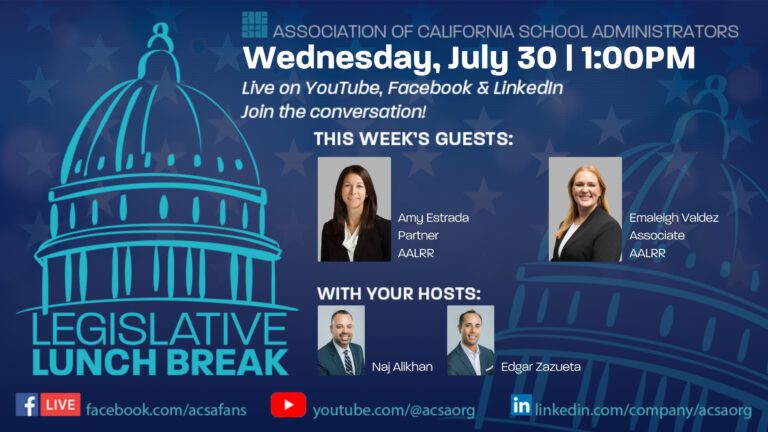When superintendents take the Future Ready Pledge, they’re saying “yes” to the implementation of personalized, research-based digital learning strategies so all students achieve their full potential. My hope is these leaders recognize the importance of aligning technology with effective instructional strategies to support teaching and student advancement.
This means the superintendents aren’t innovation junkies. Rather, they understand that “… pedagogy is the driver and digital is the accelerator to go faster and deeper into learning for all” (Coherence, page 81). Of course, simply signing a pledge will not make this happen; there’s a lot of hard work that must take place to become Future Ready. As I mentioned, it all starts with the superintendent taking the Future Ready Pledge. Afterward, there is a 5 Step Process:
- Step 1: Create a Future Ready Leadership Planning Team
- Step 2: Take the Future Ready District Leadership Self-Assessment
- Step 3: Gather Input From Stakeholders; Analyze Gaps and Strategies
- Step 4: Create Your Future Ready Action Plan
- Step 5: Export, Share, Connect, and Repeat!
By the end of last school year, the Panama-Buena Vista Union School District in Bakersfield, CA, finished Steps 1 through 3. This means we began the current school year with the gaps and strategies provided by our District Leadership Self-Assessment, as well as the additional strategies from our Future Ready Leadership Planning Team. It was now time to begin Step 4: the creation of the Future Ready Action Plan.
Michael Fullan writes about “simplexity,” which is taking a difficult problem, identifying a small number of key factors, and then bringing coherence to those factors. Identifying the factors is relatively easy—bringing them together is not.
To put it more succinctly, Step 4 is the complex part of the Future Ready 5 Step Process.
Curriculum Specialist Katrina and I examined the gaps we needed to bridge, as well as the strategies provided by the District Leadership Self-Assessment results and our Future Ready Leadership Planning Team. Here are a few of the problems we identified while synthesizing information:
- The gaps and strategies we received were difficult to place into one coherent plan.
- Our district already had a number of plans in place. Would there be room for another one? If so, what could the Future Ready Plan offer?
- How could we create a plan for the future when we didn’t know which types of software and hardware would be available three years from now, let alone three months from now?
To resolve these problems, we found ourselves referring again and again to Coherence by Michael Fullan and Joanne Quinn. The book has made a huge impact on my professional life, and I find myself thinking in terms of the four right drivers all of the time:
- focusing direction
- cultivating collaborative cultures
- deepening learning
- securing accountability
These drivers are helpful for making decisions to advance student learning. Because of this, I continually flipped through the pages in Coherence as we made sense of the gaps and strategies.
That’s when the lightbulb turned on—What if we included Fullan’s four right drivers within the Future Ready Framework? In this way, the plan would look like this:
As you can see, we decided to place the four right drivers within each Gear. We then would insert the targeted strategies for each goal next to the driver that was most applicable. (At first, we had the word “Gaps” instead of “Goals,” but we changed the verbiage to “Goals” in order to better align our strategies and make the plan more positive.) In this way, we forced ourselves to think in terms of the correct drivers instead of focusing on the wrong drivers:
- punitive accountability
- individualistic strategies
- technology
- ad hoc policies
Before moving on, it’s important to discuss these wrong drivers because they will render useless any Future Ready Plan.
Punitive accountability is harmful to a Future Ready mission because it doesn’t develop a culture of respect for teachers as professionals, and it makes personalized, anywhere, anytime learning impossible. Individualistic strategies make it difficult to bring coherence to any plan because people aren’t working together to build a common vocabulary and shared skill set. In this way, capacity is never established, and common Future Ready goals are unattainable.
Technology is another wrong driver, which makes edtech loving folks bristle. Oftentimes, I’ve found it uncomfortable to bring this wrong driver up during conversations at technology conferences. What’s important to note is digital tools aren’t negative; it’s just they’ve been used incorrectly as a driver when they’re merely an accelerant to enhance student learning.
The final wrong driver, ad hoc policies, must be avoided at all costs. A school district can’t purchase an assessment program, deploy 1:1 laptops, encourage problem based learning (PBL), train teachers on direct instruction, buy new curriculum, explore open source curriculum, and expect all of these items to automatically congeal into a coherent whole. A common thread must join these seemingly disparate strategies so teachers have a framework in which to use a particular strategy or program. Every purchase must be completed with the knowledge that it’s just one piece in a larger ecosystem of coherence. Introducing one bad ad hoc policy can destroy a school district’s environment.
So what did we include in our Future Ready Plan? We took what we’ve already invested in, created strategies that help us get better at those investments, and added new things that fit within the ecosystem we’ve established. For example, Direct Interactive Instruction (DII) is a strategy in which we’ve invested as a best practice for teachers’ direct instruction. Also, we’re an AVID district, so WICOR strategies are a part of the plan. Likewise, PBL, UDL, MTSS, PLC, and PBIS are all pedagogical tools we included.
After this, we identified tools such as Thinking Maps, Google Apps for Education, STEAM, and many strategies with high effect sizes mentioned in the book Visible Learning for Literacy. To visualize this, we created a graphic entitled “PBVFramework,” which we modeled after Park Manor’s Accelerated Learning Model on page 104 of Coherence. We also added the Simon Sinek’s “Start with Why” concept, which you can view in this excellent TED Talk Video.
As you can see below, student learning is the “Why,” the “How” is both the tools and pedagogy we deploy, and the “What” is career and technical education, Common Core State Standards (CCSS), Next Generation Science Standards (NGSS), and the 6 C’s. In the Framework below, notice how you can move outward from the center to understand our “Why,” “How,” and “What,” but you can also move inward from the perimeter to choose what should be taught, which pedagogy should be used, and the best strategy or “tool” to get the job done—all in the name of student learning (our “Why,” of course).
The PBVFamework has been an ongoing creation that’s evolved as we’ve worked on our Future Ready Plan, and it’s helped drive the creation of each Gear. Of course, this is a living graphic that will experience continual iterations.
Here’s the latest iteration for Gear 2:
As you can see, our strategies for year 1 are tied to the right drivers, which helps us avoid distractions that impede growth. We mentioned technology tools within Gear 2, but they’re by no means the end-all. The technology is just a small part in the bigger picture of pedagogy as related to personalized learning for both students and teachers.
You’ll also notice there’s only one year’s worth of strategies above, as opposed to the three years of strategies Future Ready recommends. We decided to only complete the first year’s strategies for the Gears and then present each Gear to the original Future Ready Leadership Planning Team. These members will collectively pick the two most important Gears, and we will then work on strategies for years 2 and 3 for those chosen Gears with the help of principals, academic coaches, and teachers. (As of the completion of this blog post, we have not yet had this meeting with the Future Ready Leadership Planning Team.)
So what are our next steps for years 2 and 3? First, we must keep in mind having too many goals has never been a problem in school districts; the problem is the presence of too many that are ad hoc and untethered from a cohesive system. We paid close attention to the four main priorities set forth by our district’s leadership, as well as our LCAP, with the intent of making a Future Ready Plan that’s as coherent as possible. Although the future is not yet written, it must be connected to our present and past. As William Faulkner said, “The past is never dead. It’s not even past.”
Second, we must continue to reduce, reframe, and remove. In this way, we can focus on the essentials. Steve Jobs once said, “People think focus means saying yes to the thing you’ve got to focus on. But that’s not what it means at all. It means saying no to the hundred other good ideas that there are. You have to pick carefully. I’m actually as proud of the things we haven’t done as the things I have done. Innovation is saying no to 1,000 things.” In education, this means we must say “no” to many things—possibly even good things. It’s not that they’re bad, it’s just that they’re bad for us right now.
Third, we must do as Fullan says: “…we will build upon pockets of innovation and expertise within our community to build capacity and partnerships between educators and parents to improve learning” (Coherence, 37). In this way, teachers are able to fill the gaps in their own knowledge because they know best what they need to get out of PD. This will create teacher leaders who can change the group. The ultimate goal is “crowdsourcing” a large number of these teachers who will help us avoid depending on only a few charismatic leaders. Fullan writes: “Charismatic leaders will not save the day. Rather, we need leaders who create a culture of growth” (Coherence, 47). In other words, no one person will save us; the group has to save itself.
The “Coherence” approach we’ve taken with our Future Ready Plan has made the problems I mentioned at the beginning of this post disappear. First, it helped narrow our focus in order to create a coherent plan. Second, we were able to take the plans and priorities we already had in place to create a vision for the future. Third, our main focus was never on technology.
“Technology is in a constant state of flux—what’s stable is solid pedagogy.”
If nothing else, being Future Ready is using effective teaching strategies while adopting technology only when it’s the best tool to get the job done. The four right drivers are here to keep us focused on the right path.
Simply put, we wanted our Future Ready plan to not be a series of discrete initiatives but rather an integrated, coherent strategy for change (Coherence, 59).
Of course, the information I’ve shared with you is just the first iteration, and there’s a lot of information our district would be happy to share with you if you’re interested, such as who the members of our Future Ready Leadership Planning Team are, how we reached out to approximately 80 people within the district to get their input, and what our Future Ready Plan looks like now.
It’s important, however, to end with some wise words from Michael Fullan regarding how districts become successful: “… these highly successful organizations learned from the success of others but never tried to imitate what others did. Instead, they found their own pathway to success” (Coherence, 15).
Our district is still creating our plan, and we’ll continue modifying this plan within the chaotic world in which we all live. As you travel down your unique Future Ready pathway to success—remember the Panama-Buena Vista Union School District would love to learn from you, and we’re also here to lend a hand if you ever need it.




































